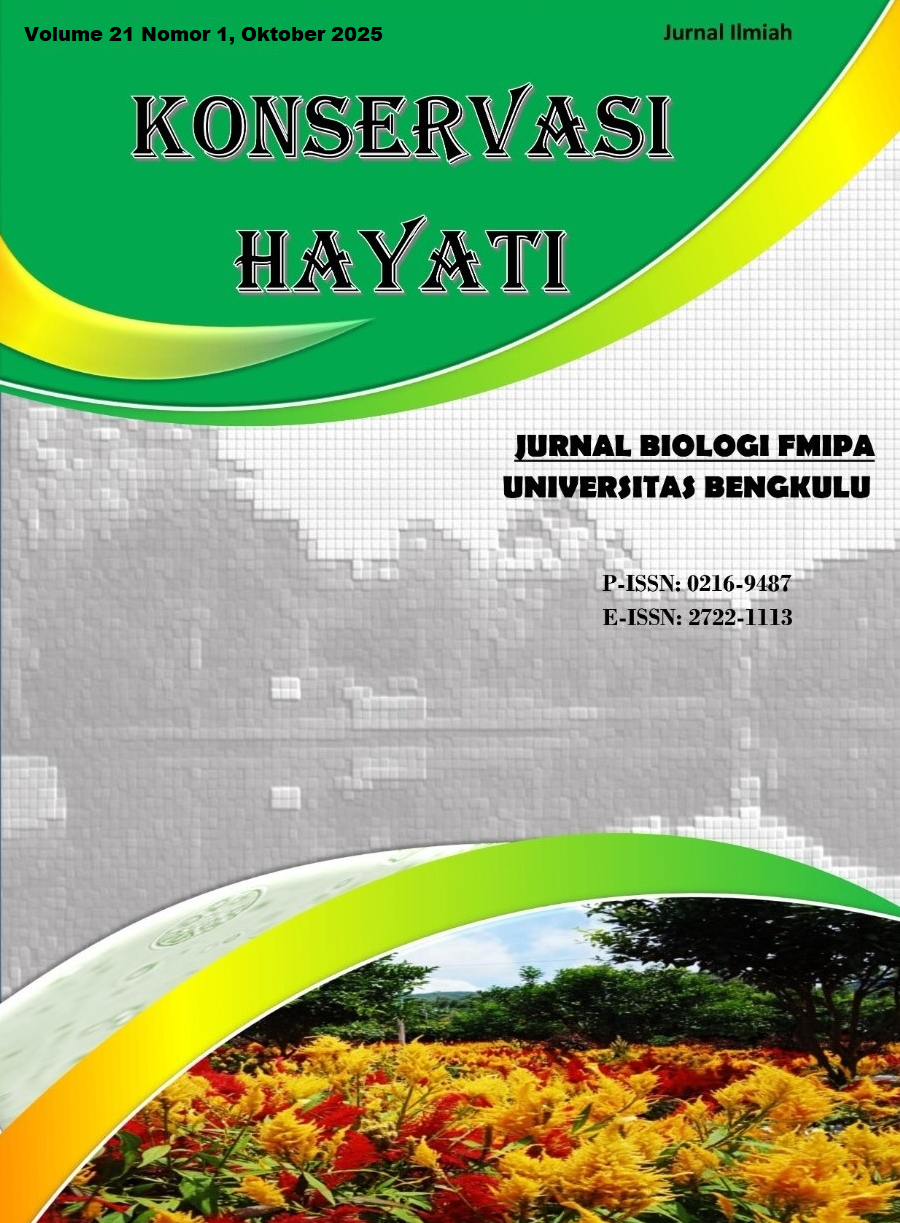Main Article Content
Abstract
The Ngaju Dayak tribe in Tewah Village still uses plants as medicine to cure various diseases. This study aims to identify the species and parts of medicinal plants used by the Dayak Ngaju tribe in Tewah Village, as well as the processing methods and use values of these plants. This descriptive study uses qualitative and quantitative approaches (mixed methods research) and was conducted in Tewah Village. The stages of the research process consist of field observations and the selection of informants to be interviewed, with the latter being determined by the established criteria. The interview was conducted using a semi-structured interview technique, in which plant samples were obtained with the assistance of informants. The plant samples found are then documented, described, identified, and added to a herbarium collection. The result of the research obtained 44 species of medicinal plants that have been utilized for medicinal purposes by the Ngaju Dayak Tribe. The various components of plants that are utilized for medicinal purposes include roots, stems, leaves, fruits, branches, twigs, and sap. The processing of the plants utilized in this method encompasses a variety of techniques, including boiling, heating, pounding, squeezing, baking, and soaking. There are 2 species of medicinal plants, namely plants kayu sambung maut (Condiaeum variegatum) and kangkawang kapas (Leea indica), that have a Use Value (UV) higher than the other 42 plant species. The Relative Use Value (RUV) of the 4 plant species that were predominantly utilized was 4.19.
Article Details
Copyright (c) 2025 Vinni Sintia , Siti Sunariyati, Widya Krestina

This work is licensed under a Creative Commons Attribution-ShareAlike 4.0 International License.
Authors who publish in this journal agree with the following terms:
- Authors retain copyright and grant the journal right of first publication with the work simultaneously licensed under a Creative Commons Attribution-ShareAlike 4.0 International License that allows others to share the work with an acknowledgement of the work's authorship and initial publication in this journal.
- Authors are able to enter into separate, additional contractual arrangements for the non-exclusive distribution of the journal's published version of the work (e.g., post it to an institutional repository or publish it in a book), with an acknowledgement of its initial publication in this journal.
- Authors are permitted and encouraged to post their work online (e.g., in institutional repositories or on their website) prior to and during the submission process, as it can lead to productive exchanges, as well as earlier and greater citation of published work (See The Effect of Open Access).
- This work is licensed under a Creative Commons Attribution-ShareAlike 4.0 International License.
